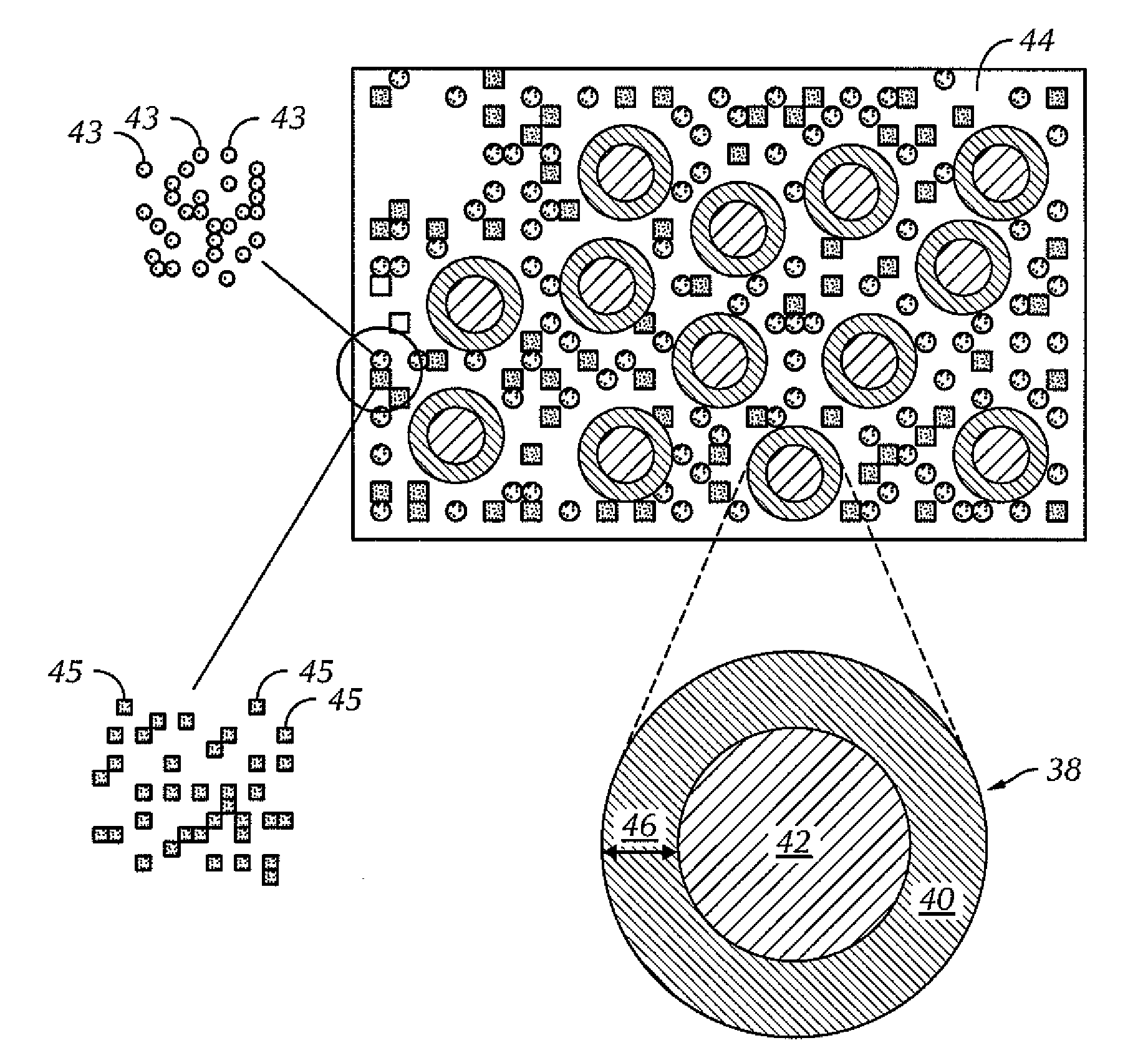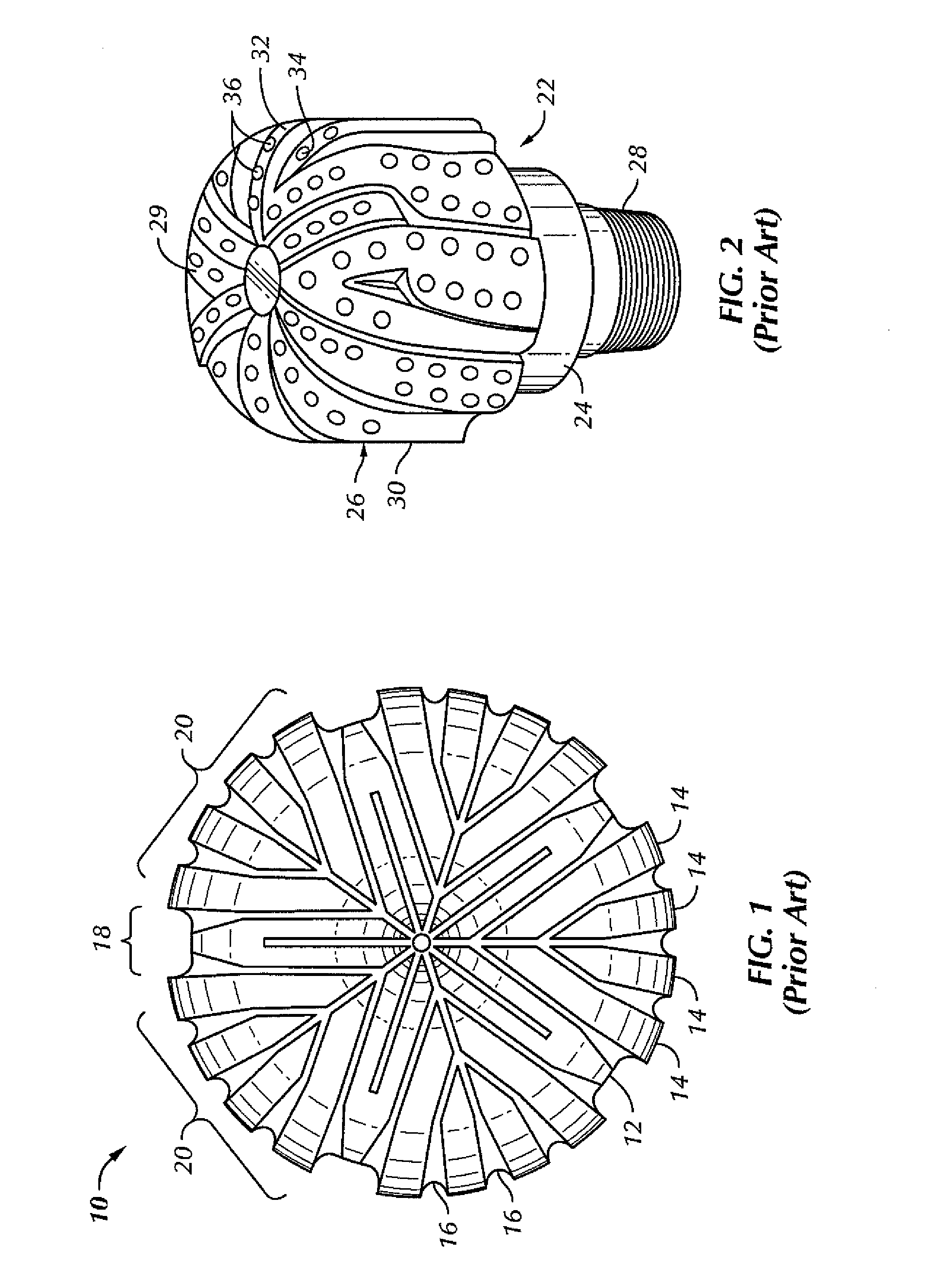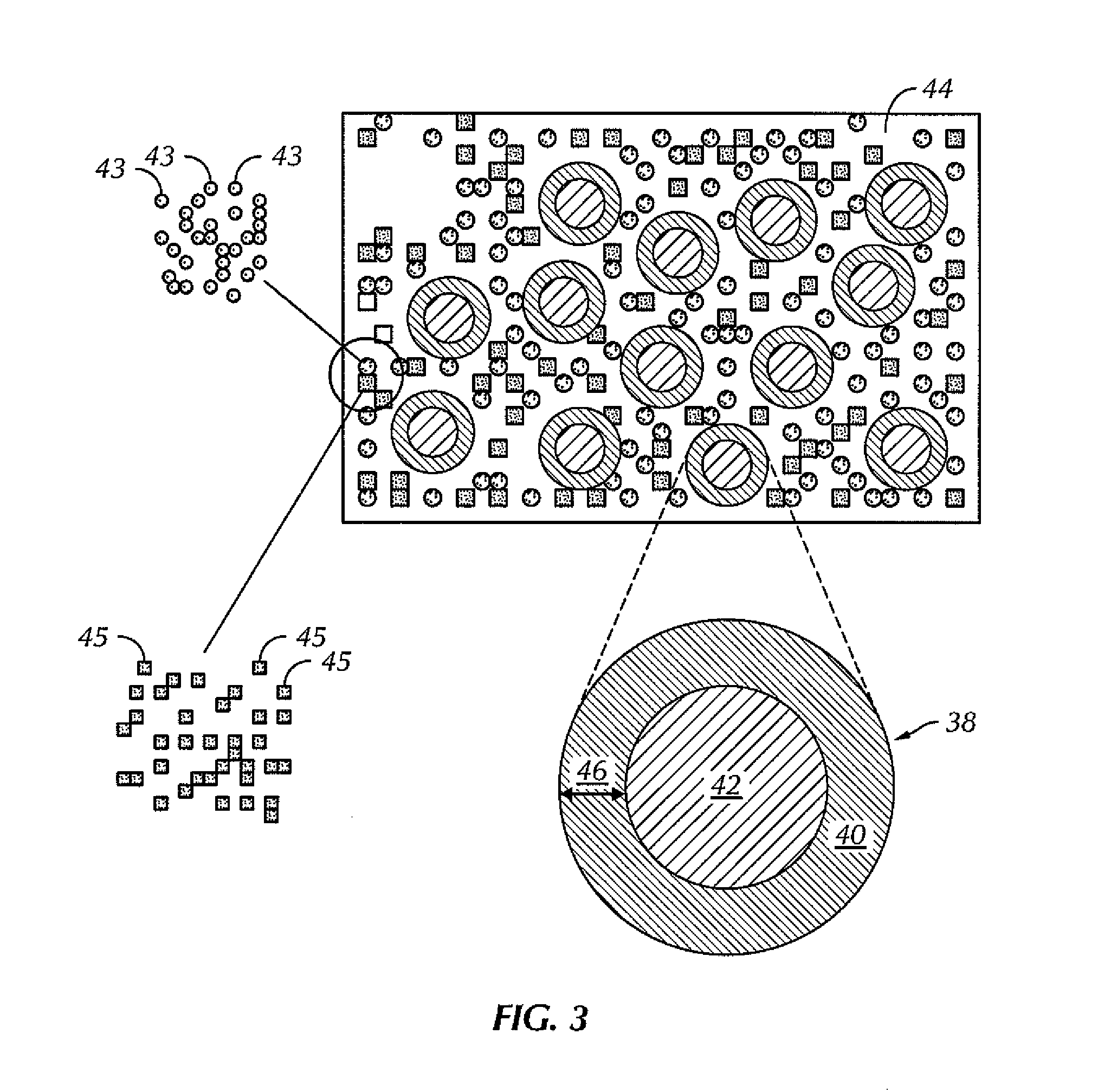Impregnated material with variable erosion properties for rock drilling and the method to manufacture
a technology of erosion properties and impregnated materials, which is applied in the direction of grinding devices, manufacturing tools, transportation and packaging, etc., can solve the problems of reducing the effect of hardness, affecting the quality of drilling, and contributing to the wear of supporting materials,
- Summary
- Abstract
- Description
- Claims
- Application Information
AI Technical Summary
Benefits of technology
Problems solved by technology
Method used
Image
Examples
example 1
[0086]A sample impregnated cutting structure formed in accordance with embodiments of the present disclosure is compared to a comparative sample cutting structure formed by a conventional process. The exemplary impregnated cutting structure is made using encapsulated diamond particles ranging from 25 to 35 mesh. The shell encapsulating the abrasive grit includes 70% WC (0.8 to 3.0 micron particle size with an average of 2 microns), 20% Co, and 10% Cu. The encapsulated particles are placed into the mold, and tungsten shoulder powder (96% W-4% Ni) is then placed on top of the encapsulated particles. Binder cubes of a copper alloy (Cu-23Mn-11Ni-6Sn-4Zn) are further placed on top of the encapsulated particles. Infiltration of the matrix is carried out at 1030° C. Referring to FIG. 8, a scanning electron microscopy (SEM) image of a polished surface of the exemplary impregnated cutting surface is shown. FIG. 8 shows the abrasive grit 82 surrounded by a shell 80 of WC. The spaces between t...
example 2
[0090]A second sample impregnated cutting structure formed in accordance with embodiments of the present disclosure is compared to the comparative sample cutting structure described above. The exemplary impregnated cutting structure is made using encapsulated diamond particles ranging from 25 to 35 mesh. The shell encapsulating the abrasive grit includes 70% WC (0.8 to 3.0 micron particle size with an average of 2 microns), 20% Co, and 10% Cu. The encapsulated particles are placed into the mold (rib area), and a tungsten carbide matrix mixture that includes 61% agglomerated WC (MAS 3000-5000), 35% cast WC, 2% Ni, and 2% Fe is then placed on top of the encapsulated particles. Binder cubes of a copper alloy (Cu-23Mn-11Ni-6Sn-4Zn) are farther placed on top of the encapsulated particles. Infiltration of the matrix is carried out at 1030° C. Referring to FIG. 10, a scanning electron microscopy (SEM) image of a polished surface of the exemplary impregnated cutting surface is shown. FIG. 1...
PUM
| Property | Measurement | Unit |
|---|---|---|
| particle size | aaaaa | aaaaa |
| diameter | aaaaa | aaaaa |
| temperature | aaaaa | aaaaa |
Abstract
Description
Claims
Application Information
 Login to View More
Login to View More - R&D
- Intellectual Property
- Life Sciences
- Materials
- Tech Scout
- Unparalleled Data Quality
- Higher Quality Content
- 60% Fewer Hallucinations
Browse by: Latest US Patents, China's latest patents, Technical Efficacy Thesaurus, Application Domain, Technology Topic, Popular Technical Reports.
© 2025 PatSnap. All rights reserved.Legal|Privacy policy|Modern Slavery Act Transparency Statement|Sitemap|About US| Contact US: help@patsnap.com



